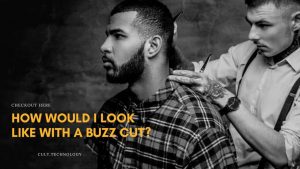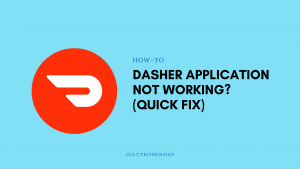One must provide the best digital experience in this cluttered online space. The onset of new UI/UX trends has lured many tech heads toward it. At some stage in the software development lifecycle, one must consider the online user experience.
Now, even more so, to be ahead of the competition, it is necessary to consider it seriously. This blog particularly concentrates on e-commerce UX design. So, have a good read of the article.
Introduction
The user experience market is projected to reach USD 20,058 Million by 2028. Tech experts will note the boost as businesses are seeking consumer-centric solutions. Industries are also studying customer behaviour to get more traffic and engagement for their online ventures.
Amazon, Flipkart, Shopify, Alibaba, and others are fine examples of user satisfaction. The e-commerce giants always keep up with immersive UI and UX trends. The market is growing at a CAGR of 14.7% for the forecast period of 2020 to 2027. So, to gain online profits, loyal customers, and long-term goodwill to sustain in the digital world.
To understand the concept of UI/UX, let us understand it with an example.
Imagine walking into a shop to buy products but cannot find any. It is because of unorganized racks and zero assistance from the staff. Apart from that, you have to wait in a queue to do a payment. All these hardships eventually make you leave the store without the products.
An e-commerce shopper feels the same thing without a good UI/UX. According to Forrester, every $1 invested in an e-commerce UX brings $100 back into the business. (ROI= 9900%).
In today’s digital era, a brand’s first presence is checked online as a website, app, or social media handle. Moreover, if the shopper is not impressed by it, he is 88% less likely to return to the brand.
Now, without doing further due, let us get into the definition of e-commerce user experience. How will it do well for your business? Let us get to it.
What is e-commerce User Experience (UX)?
We all love when someone gives us extra care and attention. We all love to eat good food already served to us on a plate. Why do we like it? Because we get the best treatment from our loved ones.
Similarly, a user needs to feel good when browsing your website or app. A feel-good factor will help you engage your targeted audience & increase the overall sales of your business.
Nowadays, consumers recall the online experiences they had while purchasing products. Therefore, no one will remember what you said or did, but they will never forget how they felt about it.
Thus, e-commerce UX design simply puts yourself into the customer’s shoes. What will they like while looking at your product? How will you ease off their purchasing journey? What intuitive micro-interactions will you use? You need to understand all these and many more design-related questions before locking a design for your venture.
Now, after knowing the crux of e-commerce UX, let us quickly go with its role in luring your audience online.
Role of Design for e-commerce
How good design helps a solution. Your design will help in reaching your target audience in a short time. It will help sell your USP, bring ease to use & understand the solution. It will also represent your brand’s consistency and, alas, create a positive user experience online.
TataClique, Zara, etc., are the top brands providing their audience a great experience. Thus, you should always know what you want from your site beyond sales. You will reach success with the best UI/UX design for your business.
How Ecommerce User Experience (UX) Directly Affects Conversions?
Some multiple factors and elements play a pivotal role in designing the UX of e-commerce development. A great design is built keeping all the minute elements in mind. Here are a few of them listed below.
- Site speed
- Catalogue displays
- Payment gateway integration
- Page sequence
- Content placement
- Product Description
- Convenience
- Number of options for users
Instead of spending money on marketing campaigns, research, and product development, spend it knowing the e-commerce UX best practices and developing your solution using the apt ones. Besides, above list, you should add an SSL certificate that can bring security to your customers. For that, you can go with low priced or cheap SSL certificate.
Six Best Practices to Improve E-commerce User Experience (UX)
#1 Faster and precise-looking venture
The online audience always cherishes easy-to-navigate websites. Your venture needs to have a high page loading speed with intuitive navigation. A user should immediately come to know the next action after performing one.
Your design also has to be precise for both mobile and desktop. It has to be user-friendly, with all the clickables in place. Voice search and image search are one of the best examples of giving the best e-commerce UX experience to users.
#2 Personalization is the key to succeed
With AI & ML tech advances, providing users with their preferences has become easy. In this busy world, everyone wants things to be done instantly. Therefore, you should ensure that they look at the products likely to be bought by them as per their previous purchases and search results.
AI gathers such data. You can add a carousel to your site saying ‘buyers also bought’ or ‘best sellers.’ Understanding your shopper’s behaviour will bring you the best online sales with customer satisfaction.
#3 Omni channel experience
Interact with your customer through multiple channels. For instance, Sephora, the beauty brand, allows users to look into their cart in-store via a tab. It makes their shopping experience easy.
You can also allow your users to create a wish list by trying things virtually and then buy them in-store on vice versa. The only point here is to engage your users online and offline and create a solid brand presence for your product.
#4 Transparency will lead to loyalty
Stating your product description, return policy, and shipping will make your shoppers trust you. Moreover, it will help your brand reach its expectations and build a loyal customer base.
Everyone loves a clearly stated fact from the other, so to have a strong bond, you, too, must write every small detail that will likely affect your relationship with your online audience.
#5 Design & place effective CTAs
We all know CTAs like ‘add to cart,’ ‘buy now,’ ‘checkout,’ etc. You must place them immersive to give users the intuitive experience of clicking on them. Utilize this kind of customer behaviour and locate your CTAs in the very place where he is bound to go and click at. It will automatically result in conversion traffic as they find it an easy-to-browse site or app.
#6 Look into your feedback
There is always room for improvement. Ensure you look into your customer feedback, as they have much to tell. By doing such a practice, you can easily make great and ‘so wanted’ changes to your venture.
The customers will get a satisfactory feeling looking at their considerations being noted by an online brand. The only mantra to follow is to become more efficient and maintain your shopper’s wish in your digital space.
Conclusion
There are several factors to take into account while designing an e-commerce website. An e-commerce site can cost thousands of dollars to launch, with more than a month to complete a design and working with a designer for weeks.
While your customers will value a visually appealing website, they also want to be able to find the things they are looking for. They want to avoid waiting while pages load. They do not desire a challenging checkout procedure. Deploy a venture worth waiting for by your users.



